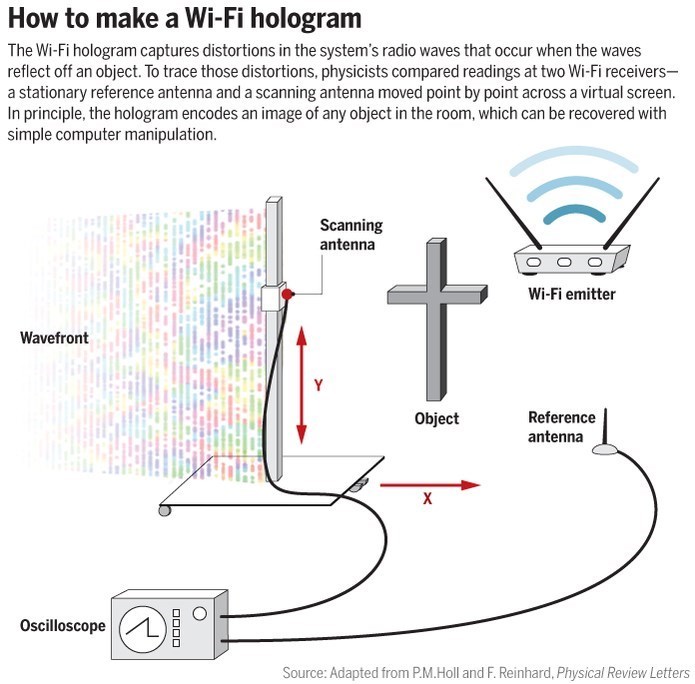For the first time, physicists have used radio waves from a Wi-Fi transmitter to encode a 3D image of a real object in a hologram.
In principle, the technique could enable outsiders “see” the inside of a room using only the Wi-Fi signals leaking out of it, although some researchers say such spying may be easier said than done.
The idea came about a few years ago, said Friedemann Reinhard, an expert on quantum sensors at the Technical University of Munich (TUM) in Germany. “At lunch we had a discussion about what the world would look through Wi-Fi eyes,” he noted, “and it became clear that if you want to see the world through Wi-Fi, you could make a hologram.”
A camera makes an image by collecting light reflected from an object and focusing it onto a screen to create a 2D pattern of greater or lesser intensity: the image. In contrast, a hologram more fully exploits the wave nature of light. Typically, lasers are used. The laser beam is split, and half of it reflects off the object and onto a photographic plate. The other half—the reference beam—shines directly on the plate. Like evenly spaced water waves lapping on a beach, the light waves in the reference beam arrive in flat wave fronts. In contrast, those reflected by the object are modified by it, and so some parts of the wave front arrive at the plate earlier and others later, depending on where they bounced off the object. The interference of the two sets of waves creates a pattern of bright and dark spots—the hologram.

Primarily Reinhard imagines putting an array of Wi-Fi sensors in the ceiling of a factory to make holograms that can better track products labeled with radio-frequency identification tags.
Neal Patwari, an electrical engineer at the University of Utah in Salt Lake City, notes that other researchers have already developed simpler ways to use stray Wi-Fi signals to track the movement of people within buildings. Such radio tracking techniques will soon take off, Patwari predicts: “In 5 to 10 years we’re going to be using Wi-Fi more for localization than for communication.”